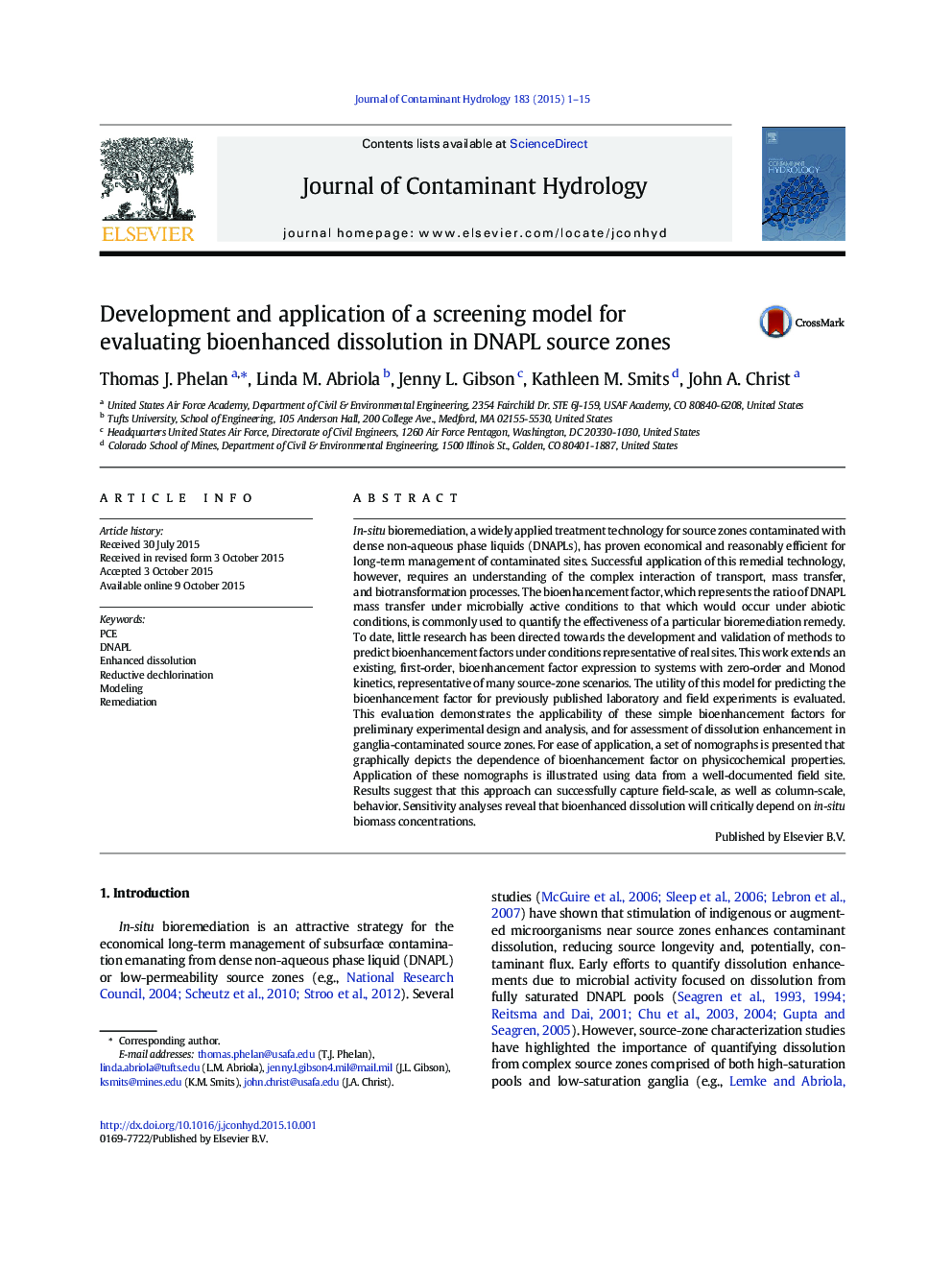| کد مقاله | کد نشریه | سال انتشار | مقاله انگلیسی | نسخه تمام متن |
|---|---|---|---|---|
| 4546375 | 1627027 | 2015 | 15 صفحه PDF | دانلود رایگان |

• Bioenhancement factor models were developed for zero-order and Monod kinetics.
• Bioenhancement factor models were evaluated against laboratory and field data.
• Bioenhancement factor models can be used as a screening tool for remedial design.
• Bioenhancement factor predictions are highly sensitive to biomass estimates.
• A series of nomographs are provided to aid in bioenhancement factor use.
In-situ bioremediation, a widely applied treatment technology for source zones contaminated with dense non-aqueous phase liquids (DNAPLs), has proven economical and reasonably efficient for long-term management of contaminated sites. Successful application of this remedial technology, however, requires an understanding of the complex interaction of transport, mass transfer, and biotransformation processes. The bioenhancement factor, which represents the ratio of DNAPL mass transfer under microbially active conditions to that which would occur under abiotic conditions, is commonly used to quantify the effectiveness of a particular bioremediation remedy. To date, little research has been directed towards the development and validation of methods to predict bioenhancement factors under conditions representative of real sites. This work extends an existing, first-order, bioenhancement factor expression to systems with zero-order and Monod kinetics, representative of many source-zone scenarios. The utility of this model for predicting the bioenhancement factor for previously published laboratory and field experiments is evaluated. This evaluation demonstrates the applicability of these simple bioenhancement factors for preliminary experimental design and analysis, and for assessment of dissolution enhancement in ganglia-contaminated source zones. For ease of application, a set of nomographs is presented that graphically depicts the dependence of bioenhancement factor on physicochemical properties. Application of these nomographs is illustrated using data from a well-documented field site. Results suggest that this approach can successfully capture field-scale, as well as column-scale, behavior. Sensitivity analyses reveal that bioenhanced dissolution will critically depend on in-situ biomass concentrations.
Journal: Journal of Contaminant Hydrology - Volume 183, December 2015, Pages 1–15